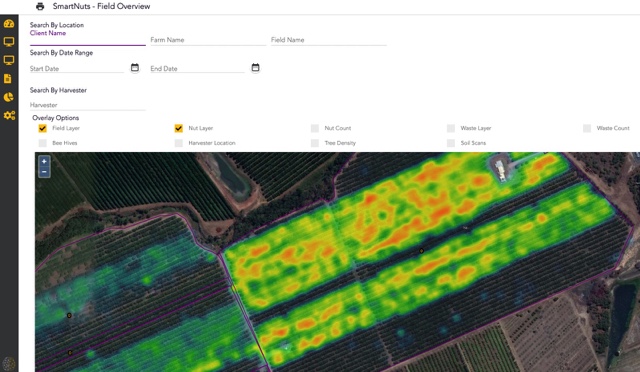A challenge facing Australia’s macadamia farmers is accurately measuring and analysing yield to optimise farming practices. Australian entrepreneurs have designed a solution using off-the-shelf technology and engineering ingenuity.
What started as a proof-of-concept model consisting of a laptop, webcam and some code has turned into the fully operational SmartNuts system, which can count 200 nuts per second with 98 per cent accuracy.
Corematic Engineering Co-Founder and Managing Director Jonathan Legault said their SmartNuts system has been adopted by the three largest macadamia growers in Queensland.
Legault told create that the system incorporated an off-the-shelf GPS locator, SIM card reader, computer and a high-speed security camera. His company applies a similar philosophy to all their projects – using available technology and integrating it in a way that suits each client’s application.
“It’s like Lego; we’re not creating blocks – we’re just trying to find the right blocks and putting them all together,” he said.
Accurate vision
Macadamia harvesters have built-in scales to estimate the number of nuts harvested by their weight. Corematic was approached by Macadamia Farms Management, based in Bundaberg, Queensland, to help find a more accurate solution.
“They spent a lot of money for a system that was actually not working,” Legault explained.
Legault said that Corematic thought they could help by designing a computer vision system to be mounted on the harvester, at the point just before the nuts arrived in the harvester’s tank.
There were several challenges to overcome. For example, the system needed to be able to distinguish nuts from sticks, bark and other debris by shape. But Legault said the biggest challenge was sourcing computer processors that were powerful enough to run the complex system code in a hot, dusty environment, and within the constraints of the project budget.
“Computing power almost killed the project,” he said, adding that this problem caused an eight-week project delay.
The solution was using specialist programmers to optimise the code to run on a sufficiently economical computer. It wasn’t easy to find people with the skills to do this, as the go-to solution for most developers was to invest in more powerful hardware.

Legault said the system returns a count every 12 metres, and this data is presented on a heat map to allow farmers to see the yield in individual zones and look into why some are doing better than others. For instance, early data showed that zones near high power lines had a lower yield. Other issues could be the location of bee hives or irrigation.
In future, Legault said the software could combine yield counts with other farm data and incorporate AI to help optimise farm management. Corematic has also been approached to apply similar technology to potato and orange farms.
While the Corematic solution is focused on counting the nuts actually harvested, other home-grown innovators are looking at how computer vision technology can be combined with satellite imagery to count macadamias, apples and other fruit while it is still on trees. This can be used to manage crops and estimate yield, and respond to natural disasters and disease.
A successful recipe
Corematic was founded in July last year by mechanical engineer Legault and mechatronic engineer Scott Hansen. In their first year of operation, they have employed another five people and worked on 30 very diverse projects, including agricultural applications, aluminium smelter safety, and smart vehicles and data collection for the construction and government sectors.
Legault said that his background in project management, business development and sales combined with Hansen’s technical expertise is a “successful recipe”.
“I’ve seen so many businesses fail because [engineers] have an idea that they don’t know how to commercialise, and business people who just focus on the business and don’t even try to understand the technical importance of creating a solution,” Legault explained.
He added that customers also like the fact that the Corematic engineers who write the code and design the system go into the field to install and test their work.
“They get their hands very dirty,” he said.



